Even the ruins and debris of a ghost town can embody the spirit of a rural region such as Basilicata in Southern Italy. Craco was hit by landslides during the 1960s and lay abandoned for decades, but is today open as a museum-park.
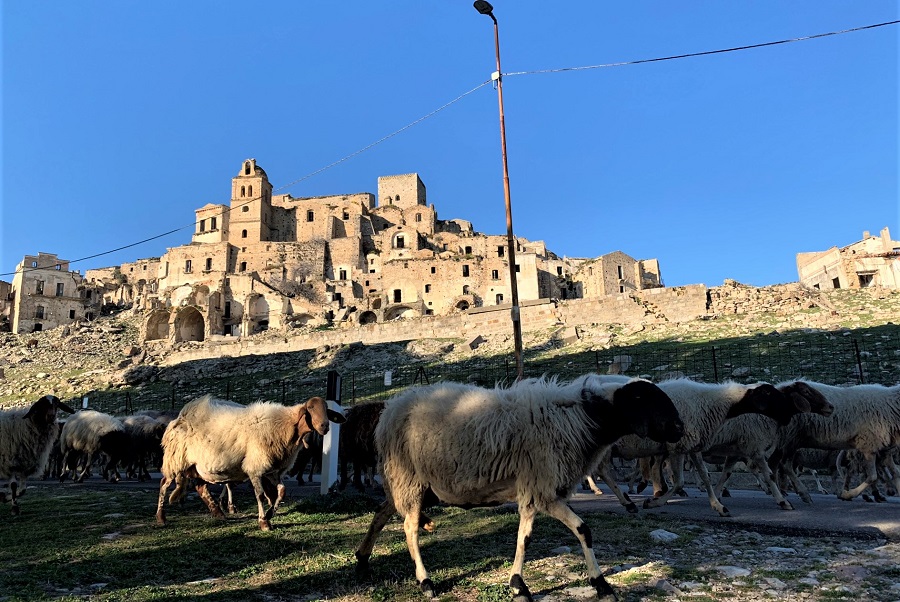
A flock passing the fenced area of old Craco (Photo: Andrea Gambaro for TravelMag.com)
Cawing crows are incongruous with a bright, spring afternoon in early March, but they perfectly match the derelict site they’re circling over. When I first spotted it on my way here – a distant shape along the road – Craco looked like a Gothic castle envisioned by some 19th-century novelist; its solitary tower perched atop a precipitous cliff like the setting for a thrilling finale. The view from up close is no less sinister: an abandoned stone town on top of the hill, enlivened only by errant gusts of wind, whistling through cracked walls and over heaps of rubble.
With a safety helmet wobbling on my head, I let the tour group go ahead up the access ramp, alongside a two-storey frontage that conceals what’s left of the multi-tiered town. Missing doors and windows let me peek inside at white-tiled walls, wrecked furniture, uneven floors and rusty appliances. Further on, a tree’s leafless branches jut out from a first-floor balcony, waiting for blooming season. It takes some stretch of the imagination to accept this was a living town until not long ago. And the occasional crack of a slamming shutter makes me wonder how much of it is yet to fall apart.
Landslides and looters
I join the other yellow helmets grouped around the tour guide, a young local guy speaking at the top of his voice lest his words be swept away by the wind. We are standing next to what used to be Piazza Vittorio Emanuele II. Once the main square, it’s now a sloped stretch of grass and stones not quite fit for urban toponymy. The handful of donkeys grazing here and there would have been a common sight in the old days of Craco too. Back then, however, their role in local life would have involved more heavy work and less idling.
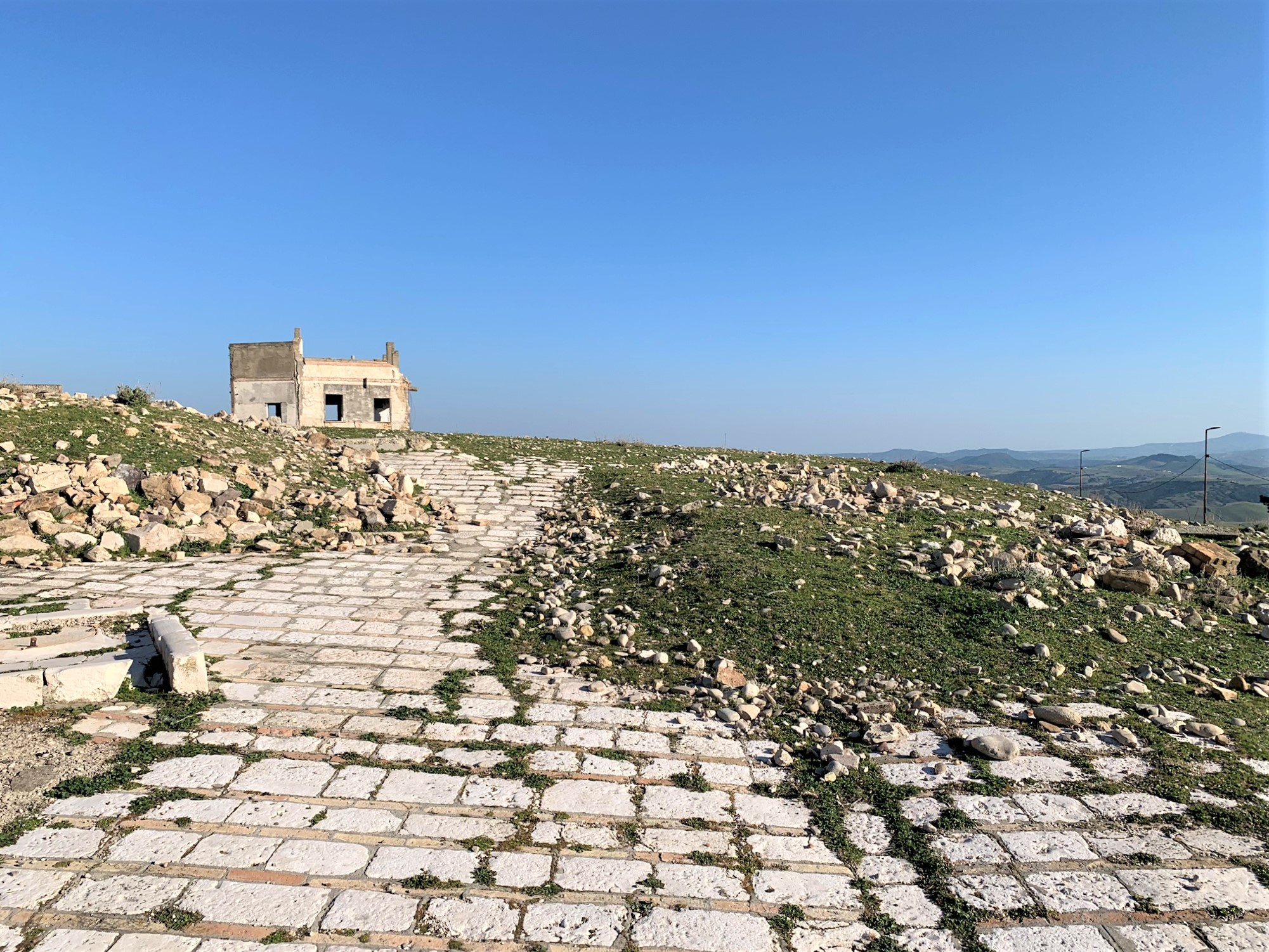
In the old days, Piazza Garibaldi (Photo: Andrea Gambaro for TravelMag.com)
The guide points at the old cinema and the pastry shop which formed part of the far side of the square, relatively more intact than what we’ve seen so far. It was there that the town started to slide in late 1962, prompting the houses downhill to be evacuated in a matter of months. Not the first landslide recorded in Craco’s recent history, but certainly the most catastrophic.
Further ground movements gradually affected other areas, while containment measures proved ineffective. The evacuees relocated, first to prefabs nearby and then to a new town built from scratch on the valley floor. Within twenty years, the old Craco was completely abandoned.
The guide is cautious on the question of whether any of it could have been prevented. Modern urban expansion likely accelerated a natural process that would have happened anyway, caused by the clayey soil Craco had been pushing on for centuries. But what happened after the evacuation is to be blamed on human wrongdoing entirely. As the buildings slowly crumbled apart, looters targeted anything worth taking away, including what was left in the private properties and ancient treasures bearing testimony to the town’s heyday as a rural hub.
A golden mountain
Back in the day, Craco used to be known as Monte d’Oro, Golden Mountain. Arcadian images come to mind on hearing this idyllic name, which derived from the wealth of wheat fields once hugging the surrounding slopes. Of these, we get increasingly expansive views as we proceed uphill.
We’re headed for the square-plan tower standing at the top, which was originally a Norman fortress from which the town expanded. The older quarters are also the best preserved, as the higher part of the hill is formed of solid rock and less impacted by the landslides.
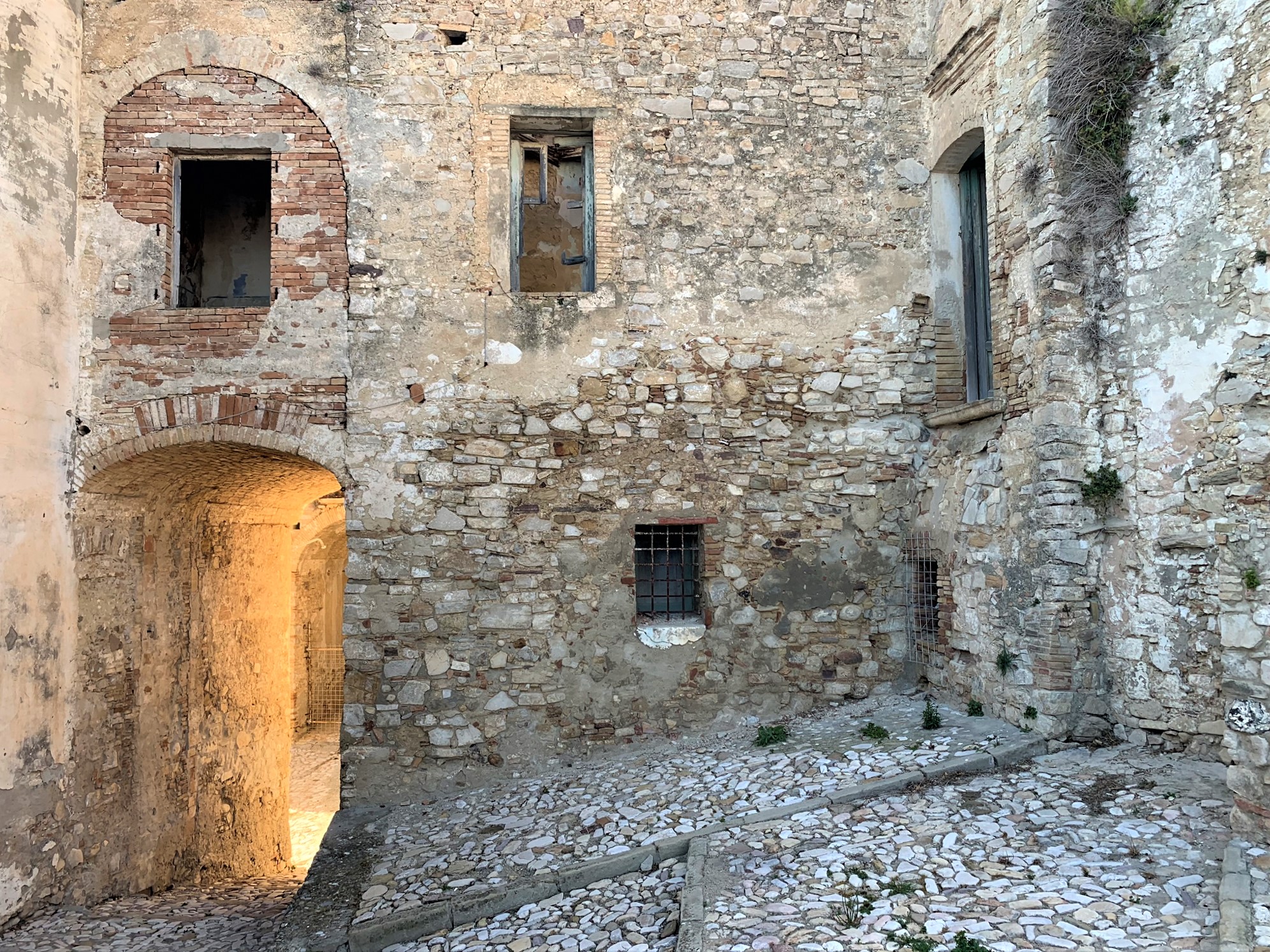
A corner of medieval Craco (Photo: Andrea Gambaro for TravelMag.com)
As we enter the Medieval centre, it gets easier to picture the surroundings as they would have appeared when Craco was still inhabited. Palazzo Grossi has both the enduring grace of a stately home and the shabby look of a neglected building. Either time or looters have taken away most of the railings that used to adorn its windows, behind which portions of brightly-coloured frescoes make me wish it were safe to have a look inside too.
As one of the ruling families in feudal Craco, the Grossi would look out from their rooms onto the majolica dome standing just below; an Oriental hat the Chiesa Madre still wears with remarkable ease. Beyond that, they would see their vast land properties and those working there all year round. On Sundays, both peasants and landowners would congregate at church for the service and the portal they passed through was one of the relics stolen after the abandonment. It has since been retrieved and restored at the entrance.
Away from church, things haven’t always been peaceful between the upper and lower classes. Scores of insurgents occupied the fields in 1799, in the wake of reforming ideas which had reached the countryside from the upcoming urban bourgeoisie. But the clergy and the rich had no intention of letting modernity alter their inherited privilege. Gathered at Palazzo Carbone, they replied with gunfire and suppressed the uprising. We can’t get anywhere near the windows where the shots came from, as the ground is still in motion in that area.
A few more palaces have survived, and it comes as no surprise that the lasting heritage should concern mainly the upper class. The underlying peasant culture is typically as determined in life as it is reluctant in going down in history. To remember it, the guide suggests turning again towards the empty fields, once so abundant they employed seasonal labour even from the nearby regions. “Now they lie fallow and are left for the woodland to take,” he comments, “but their silence seems to pay homage to the eternal struggle of the peasants.”
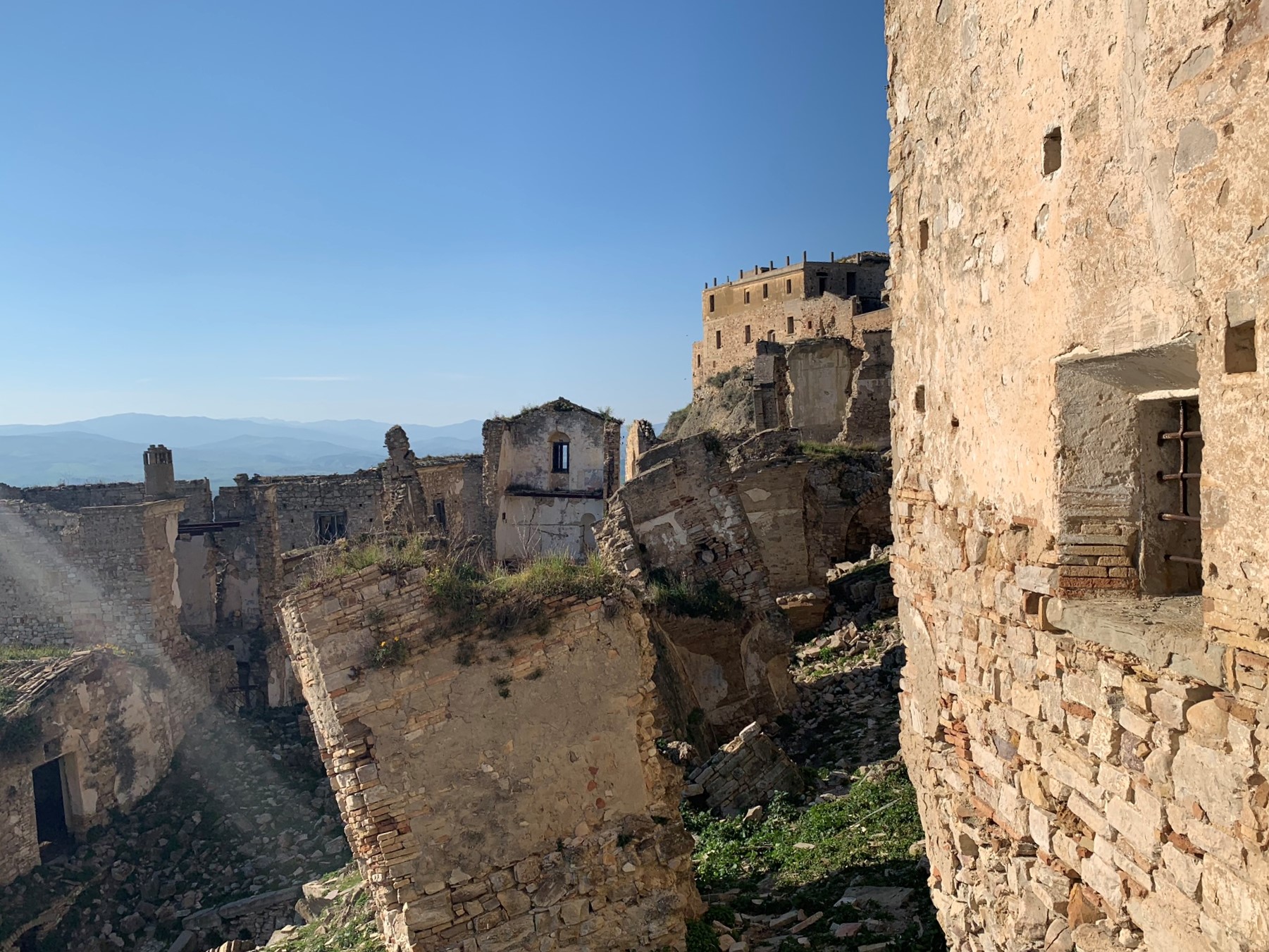
A desolated sight below Palazzo Carbone (Photo: Andrea Gambaro for TravelMag.com)
Last night
An expected presence in a ghost town is silence, which reminds me of other places I’ve visited during my road trip across Basilicata. To Matera, for example; once a condemned city itself and now the region’s most popular destination, among whose cliffs and canyons silence fell thick as the night broke and the tourists returned to their stone-carved hotel rooms. Or to Tursi, a smaller town where I spent the night yesterday as part of a detour, perched on a hill just like Craco.
I booked a room last minute from a host who had forgotten to take it offline until high season. The countryside had already darkened behind the windscreen when he rang me to apologise for the inconvenience, surprised though he was that anyone would be heading to Tursi in winter. He wasn’t around at this time of year and the flat was messy, but a neighbour could let me in if I confirmed the booking.
At the flat, I went out onto the narrow, thin balcony to unwind. All was wrapped up in night-time silence as I looked at the bunch of old houses I had just driven through. Sloped at the edge of a precipice, they clung together as if kept in place only by leaning against one another. I twitched away from the railing at the idea of such frailty, which had punctuated my trip so far, but only now came fully into focus.
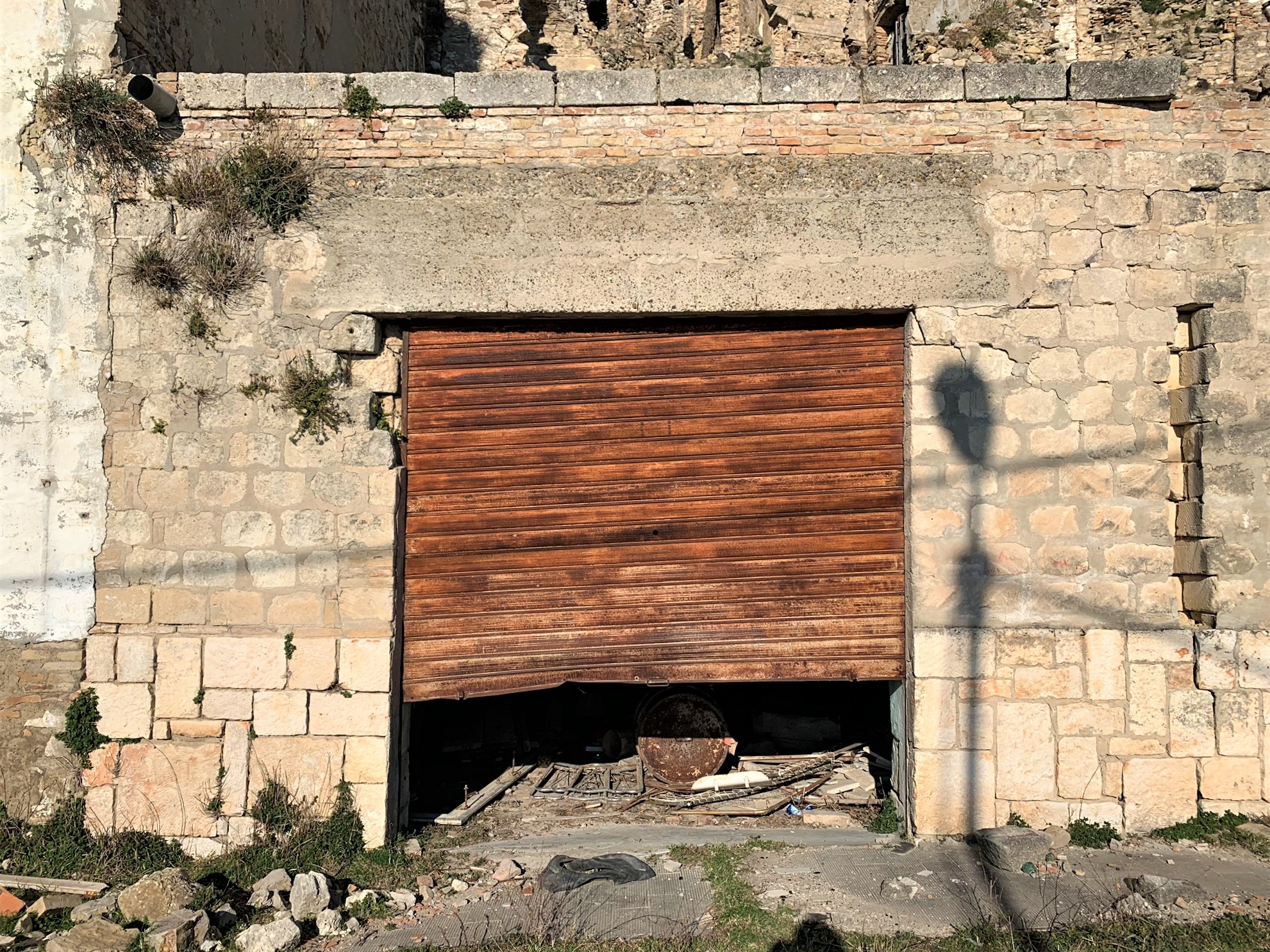
Shutters are down (Photo: Andrea Gambaro for TravelMag.com)
In one’s head
In the morning I met the host’s neighbour again, a small white-haired woman who invited me over for breakfast. Her bright gaze and rejuvenating smile made me unsure about her age, but curiously, I did find a vague resemblance to the life-sized puppets of elderly peasants sitting outside. I saw many – some dangling from the balconies or guarding front doors – while taking a walk around the town. A local Carnival tradition, I assumed. Though with not a living soul in sight, their unnatural postures and wide-open eyes were eerie, rather than festive, company on the stroll.
Here I entered the old quarter, Rabatana, a name also found elsewhere in Basilicata to indicate Arab settlements dating back over a thousand years. I trod uneven cobbles and nosed around half-derelict houses, thinking the surrounding stones as trustworthy keepers of ancient memories. This added a sense of endurance to the opposite feeling I had yesterday night, and in hindsight, was a much fitting prelude to the tour of Craco.
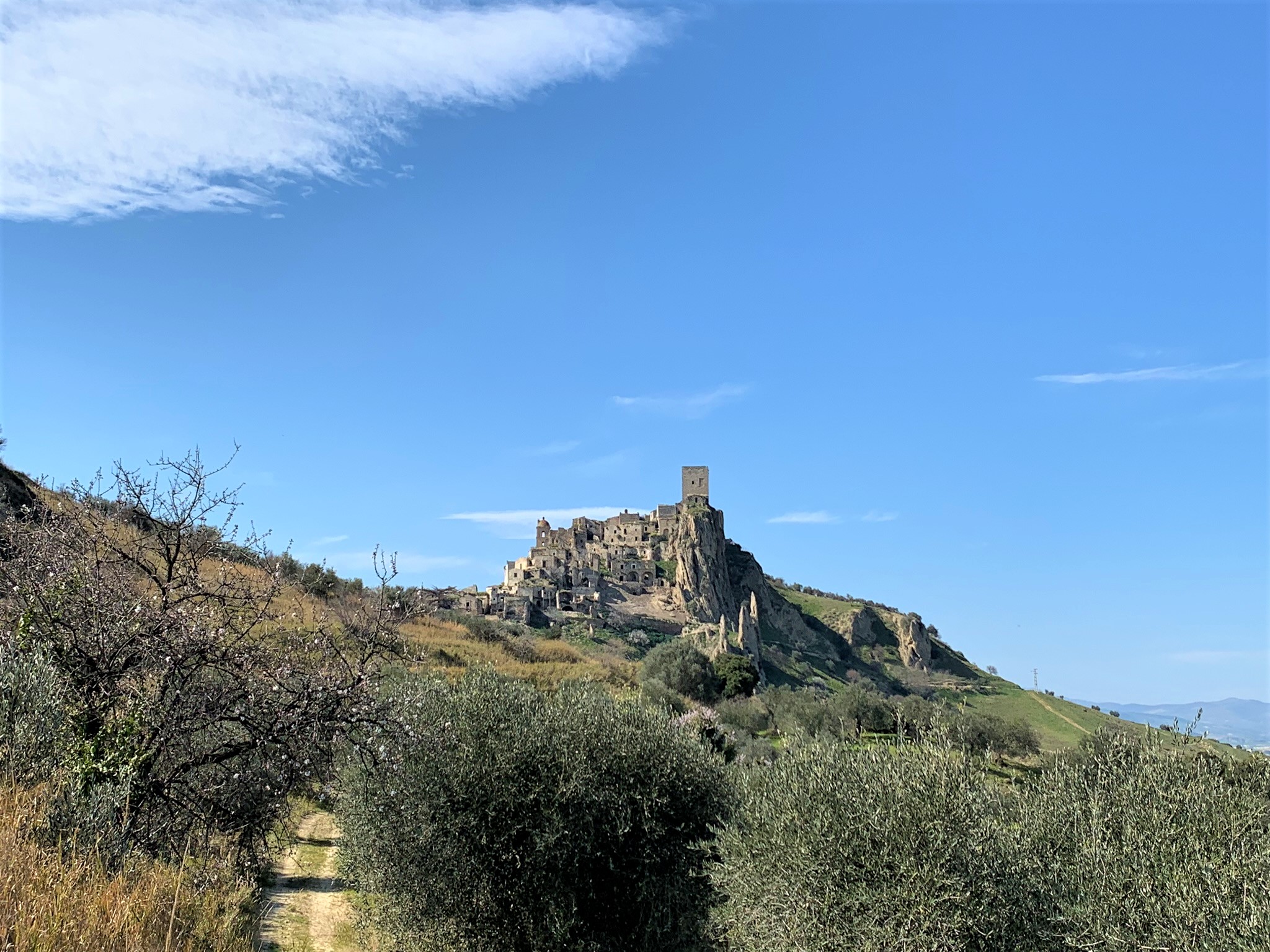
Craco from a distance (Photo: Andrea Gambaro for TravelMag.com)
It all makes me think the landslides haven’t deprived Craco of its kinship to the neighbouring towns. Like them, it sits atop the hill to commemorate the history and culture of this southern Italian region, and turning it into a museum has prevented it from simply decaying into rubble. More than a ghost town, it’s a time-worn monument to both the precarity and persistence of rural life.
On the way back we walk past the Norman tower, currently occupied by a water tank installed during the fascist regime. Future plans for Craco include making the view from its rooftop accessible to visitors, but for now we make do with a lower vantage point next door. Sheep bells clang nearby as we take turns leaning on a window frame, below which someone redundantly wrote ‘FANTASTICO!’. A half-ironic notice asks visitors to spell such remarks only in their heads, as I’m sure we all do while looking at the ravine-wrinkled valley stretching far and wide before us. Projected against it the tower stands out, and the shadow of an ancient town runs in and out the folds of the landscape.
Launched in 2009, the Museum Scenographic Park of Craco is accessible on a guided tour only. The visit includes a thorough account of the town’s history at the Craco Emotional Museum, housed in an old convent just outside the old town. A cultural venue, a youth hostel, and an art and cinema atelier also form part of the project.